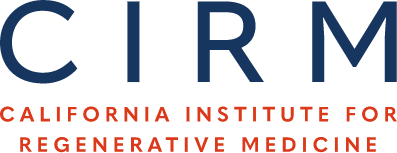Training Program in Stem Cell Research at UCSF
Grant Award Details
Grant Type:
Grant Number:
TG2-01153
Investigator(s):
Award Value:
$7,814,027
Status:
Closed
Progress Reports
Reporting Period:
Year 4
Reporting Period:
Year 5
Reporting Period:
Year 6
Grant Application Details
Application Title:
Training Program in Stem Cell Research
Public Abstract:
Our goal is to continue the Type I CIRM-funded Comprehensive Training Program that was established at this institution nearly 3 years ago. Specifically, we want to support 6 graduate students, 6 postdoctoral (Ph.D.) fellows, and 4 clinician-scientists (M.D. and or Ph.D.). We provide a unique training environment for students at all levels who are pursuing careers in regenerative medicine. Specifically, our institution offers a world-class research training experience in the context of an equally prestigious medical school and clinical enterprise. We are also noted for our faculty, a diverse and talented group of individuals—1,500 full-time members who are renowned for their dedication to the training process. Additionally, this institution has a long history of supporting human embryonic stem cell research within a framework of the highest ethical standards of conduct. In this productive research environment, our regenerative medicine institute fosters work toward regenerative medicine therapies. The regenerative medicine institute has 7 pipelines that are designed to promote the development of cell-based therapies for repair/regeneration of cardiovascular, neural, pancreas and liver, hematopoietic, musculoskeletal, epithelial, and reproductive tissues. Each pipeline integrates the research of numerous investigators who are working together to translate basic research discoveries into clinically viable therapies. The pipelines are supported by programs that cut across several disciplines, including Human Embryonic Stem Cells, Cancer, Immunology, Genetics, and Bioengineering. Regenerative medicine institute research is supported by key technology core facilities. Additionally, we were awarded a grant to build and run a CIRM Shared Laboratory and Teaching Facility that will be an important resource for our trainees and a CIRM Major Facilities Award that will allow consolidation and expansion of stem cell-related activities in a new building. With regard to campus-wide events, the regenerative medicine institute sponsors many well-attended series, including regularly scheduled seminars, journal clubs, a young-faculty forum, and an annual retreat. These events take place against a backdrop of stimulating activities with similar formats in other programs that cover cutting-edge research developments in the U.S. and around the world. In this context, CIRM trainees at this university will have several different types of learning experiences that include formal courses in stem cell biology and related topics such as human development and cell biology. Ethical issues will be addressed in a course that is solely devoted to this topic. Trainees will also do research with world-class mentors who focus on transforming basic research discoveries into clinical applications. Thus, this university provides an exceptional and exciting environment for trainees who will be the next generation of leaders in the field of regenerative medicine.
Statement of Benefit to California:
We envision that the citizens of the state of California will benefit in many ways from continuing this institution’s Comprehensive Training Program for graduate students, postdoctoral fellows (Ph.D.), and clinician-scientists (M.D. and/or Ph.D.). Collectively, the basic research, translational strategies, and clinical therapies that will emerge from the work of this university’s California Institute for Regenerative Medicine (CIRM)-funded trainees will be an important stimulus to the state economy, particularly the biotechnology sector and associated medical enterprises. Additionally, specific groups of individuals will directly benefit from work that is focused on cell-based therapies for repairing tissues and organs whose damage leads to common medical conditions, such as diabetes, cardiovascular disease, Parkinson’s disease, paralysis and/or immune dysfunction. On the way to achieving the CIRM’s ultimate goals in terms of novel regenerative therapies for patients, we envision that numerous other benefits will emerge. For example, human embryonic stem cell (hESC) systems are powerful tools for unraveling the molecular bases of human development, which remain largely a black box. A fundamental lack of understanding regarding the mechanisms that give rise to the hundreds of cell types that form tissues and organs makes it extremely difficult to discern why these processes sometimes go awry, leading to birth defects and/or setting the stage for many diseases. Additionally, it is likely that novel therapies for other medical conditions will emerge. In this regard, some forms of cancer are now thought to be associated with the proliferation of stem cells that carry mutations in genes that promote their self-renewal rather than differentiation and integration into the compartment that they normally occupy. Other important applications include drug development. For example, hESCs and their differentiated progeny could be used to screen lead compounds for efficacy, safety and/or toxicity. Where will the workforce come from that will enable this revolution in how the medical establishment approaches patient care? Given the fact that hESCs were first described just 10 years ago, this is a very young field that must be rapidly populated with scientists and clinicians who are specially trained in all aspects of regenerative medicine, a new specialty. This necessity makes the funding of CIRM-sponsored training programs especially critical for institutions such as ours that have the ability to make important research discoveries and translate them into clinical therapies. In this regard, our university has a long and distinguished history of training leaders in science and/or medicine who easily traverse the boundaries between academia and industry. Our past successes strongly suggest that our CIRM-funded training programs will be equally successful. Accordingly, we expect that our trainees will become leaders in the field.
Publications
- J Pediatr Surg (2012): Alterations in maternal-fetal cellular trafficking after fetal surgery. (PubMed: 22703775)
- PLoS One (2012): The bHLH Repressor Deadpan Regulates the Self-renewal and Specification of Drosophila Larval Neural Stem Cells Independently of Notch. (PubMed: 23056424)
- Cell Rep (2013): Bivalent Chromatin Marks Developmental Regulatory Genes in the Mouse Embryonic Germline In Vivo. (PubMed: 23727241)
- Nature (2014): Cell-autonomous correction of ring chromosomes in human induced pluripotent stem cells. (PubMed: 24413397)
- Dev Biol (2013): Cerebellar Cortical Lamination and Foliation Require Cyclin A2. (PubMed: 24184637)
- Nat Cell Biol (2014): The chromatin regulator Brg1 suppresses formation of intraductal papillary mucinous neoplasm and pancreatic ductal adenocarcinoma. (PubMed: 24561622)
- Cell Rep (2014): Control of Outer Radial Glial Stem Cell Mitosis in the Human Brain. (PubMed: 25088420)
- Am J Transplant (2011): Decreased Risk of Graft Failure with Maternal Liver Transplantation in Patients with Biliary Atresia. (PubMed: 22221561)
- Cell (2011): Development and Evolution of the Human Neocortex. (PubMed: 21729779)
- Blood (2013): Direct and indirect antigen presentation lead to deletion of donor-specific T cells after in utero hematopoietic cell transplantation in mice. (PubMed: 23610372)
- Methods Mol Biol (2013): Directed differentiation of human pluripotent stem cells along the pancreatic endocrine lineage. (PubMed: 23546752)
- Elife (2014): Distinct and separable roles for EZH2 in neurogenic astroglia. (PubMed: 24867641)
- Wiley Interdiscip Rev Dev Biol (2012): Drosophila models of epithelial stem cells and their niches. (PubMed: 23801493)
- Development (2013): A dynamic population of stromal cells contributes to the follicle stem cell niche in the Drosophila ovary. (PubMed: 24131631)
- Nat Struct Mol Biol (2012): Efficiency and specificity in microRNA biogenesis. (PubMed: 22580560)
- G3 (Bethesda) (2014): Enhancer-trap Flippase Lines for Clonal Analysis in the Drosophila Ovary. (PubMed: 25024257)
- Proc Natl Acad Sci U S A (2011): Ets transcription factor Pointed promotes the generation of intermediate neural progenitors in Drosophila larval brains. (PubMed: 22143802)
- J Immunol (2014): Fetal Intervention Increases Maternal T Cell Awareness of the Foreign Conceptus and Can Lead to Immune-Mediated Fetal Demise. (PubMed: 24415782)
- Semin Cell Dev Biol (2011): Hemogenic endothelium: origins, regulation, and implications for vascular biology. (PubMed: 22001113)
- Semin Reprod Med (2013): Human trophoblast progenitors: where do they reside? (PubMed: 23329637)
- Cell Stem Cell (2013): Integration of Genome-wide Approaches Identifies lncRNAs of Adult Neural Stem Cells and Their Progeny In Vivo. (PubMed: 23583100)
- Neuron (2012): Integrins Regulate Repulsion-Mediated Dendritic Patterning of Drosophila Sensory Neurons by Restricting Dendrites in a 2D Space. (PubMed: 22243747)
- Nat Biotechnol (2014): Low-coverage single-cell mRNA sequencing reveals cellular heterogeneity and activated signaling pathways in developing cerebral cortex. (PubMed: 25086649)
- Chimerism (2011): The maternal immune response inhibits the success of in utero hematopoietic cell transplantation. (PubMed: 21912720)
- Chimerism (2012): Maternal microchimerism in patients with biliary atresia: Implications for allograft tolerance. (PubMed: 22772071)
- J Clin Invest (2011): Maternal T cells limit engraftment after in utero hematopoietic cell transplantation in mice. (PubMed: 21245575)
- Nat Commun (2013): Mitotic spindle orientation predicts outer radial glial cell generation in human neocortex. (PubMed: 23575669)
- Patholog Res Int (2011): Morphological analysis of CDC2 and glycogen synthase kinase 3beta phosphorylation as markers of g2 –> m transition in glioma. (PubMed: 21660227)
- Nature (2014): Mouse liver repopulation with hepatocytes generated from human fibroblasts. (PubMed: 24572354)
- J Vis Exp (2011): A Mouse Model of <em>in Utero</em> Transplantation. (PubMed: 21307829)
- Nature (2010): Neurogenic radial glia in the outer subventricular zone of human neocortex. (PubMed: 20154730)
- J Cell Biol (2012): Nodal signaling regulates endodermal cell motility and actin dynamics via Rac1 and Prex1. (PubMed: 22945937)
- J Neurooncol (2010): OLIG2 is differentially expressed in pediatric astrocytic and in ependymal neoplasms. (PubMed: 21193945)
- PLoS Genet (2012): Polycomb-like 3 promotes polycomb repressive complex 2 binding to CpG islands and embryonic stem cell self-renewal. (PubMed: 22438827)
- Nature (2014): Radial glia require PDGFD-PDGFRbeta signalling in human but not mouse neocortex. (PubMed: 25391964)
- Nature (2014): Replication stress is a potent driver of functional decline in ageing haematopoietic stem cells. (PubMed: 25079315)
- J Clin Endocrinol Metab (2011): The role of anti-mullerian hormone (AMH) in assessing ovarian reserve. (PubMed: 21937624)
- Proc Natl Acad Sci U S A (2014): Synthetic control of mammalian-cell motility by engineering chemotaxis to an orthogonal bioinert chemical signal. (PubMed: 24711398)
- Clin Perinatol (2012): In utero hematopoietic cell transplantation for the treatment of congenital anomalies. (PubMed: 22682381)
- Nature (2013): Vitamin C induces Tet-dependent DNA demethylation and a blastocyst-like state in ES cells. (PubMed: 23812591)
- Hepatology (2012): A ZFN/piggyBac step closer to autologous liver cell therapy. (PubMed: 22422378)



